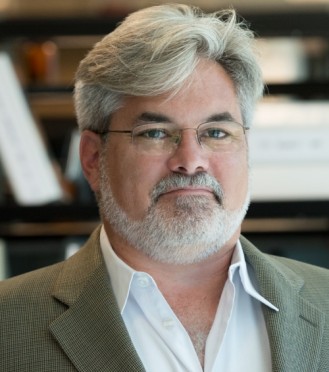Gladstone NOW: The Campaign Join Us on the Journey✕

Gladstone’s three new research centers focus on thematic areas that impact numerous scientific disciplines.
Academic institutions and industry partners in the Bay Area now have greater opportunities to collaborate closely with researchers across Gladstone. On January 9, 2018, while addressing the organization’s community for the first time as the new president, Deepak Srivastava, MD, announced the launch of three new research centers.
The centers are intended to serve as catalytic agents to bring together the best teams to focus on broad thematic areas that impact numerous scientific disciplines.
The new centers are the Center for Cell Circuitry, the Center for HIV Cure Research, and the Center for Systems and Therapeutics.
Center for Cell Circuitry
The Center for Cell Circuitry addresses the enormous therapeutic potential of cellular circuits, which connect individual molecular components and allow cells to process signals and control decision-making.
“With our colleagues at UC San Francisco, we will create single-cell tools to map how cellular components connect into circuits,” said the center’s director, Leor Weinberger, PhD. “If these circuits can be mapped, we could repair broken circuits that lead to disease and disrupt specialized circuits in viruses and cancers.”
The center will develop new approaches that overcome inherent limitations in traditional techniques, which analyze bulk populations of cells, thereby obscuring individual cell behavior. Ultimately, the center’s goal will be to control these circuits through therapeutic targeting in a variety of biological systems, including cellular reprogramming, neuroscience, cancer, and infectious disease.
Center for HIV Cure Research
The new Center for HIV Cure Research, directed by Warner C. Greene, MD, PhD, seeks to build upon the past success of the Gladstone Institute of Virology and Immunology, but with a singular research focus: to identify, reduce, and control latent HIV reservoirs.
“Our ultimate goal is to allow infected individuals to eventually discontinue antiretroviral therapy,” said Greene, who is also co-director of the UCSF-Gladstone Center for AIDS Research and principal investigator with the amfAR Institute for HIV Cure Research at UCSF.
The “reduce and control” strategy involves decreasing the size of HIV reservoirs while engineering an immune response to control the remaining virus. The scientists will start by searching for potent and nontoxic ways to wake up the latent virus, in order to precisely define the types of cells that comprise the reservoirs.
The center will also pursue novel approaches to identify biomarkers for latently infected reservoir cells. In addition to predicting whether a treatment will be successful, such biomarkers could provide insights into the biology of HIV latency and suggest new ways to attack viral reservoirs.
Collaborators for this new center include investigators at Gladstone, UCSF, the amfAR Institute for HIV Cure Research, and the Blood Systems Research Institute.
Center for Systems and Therapeutics
In contrast to reductionist methods that study elements of a system in isolation, the Center for Systems and Therapeutics investigates systems holistically. It uses cutting-edge approaches to understand entire systems involved in complex biology, from a cell to the central nervous system.
The center relies on powerful tools—such as imaging, genomics, and robotics—to observe multiple variables simultaneously and over a given period of time, thus gaining a deeper understanding of how a system functions, and how its individual elements interact and work together dynamically. To analyze the very large datasets generated by these tools, the center also develops sophisticated mathematical and computational approaches, including deep learning, a form of artificial intelligence.
Supported by Gladstone’s business development office, the center actively collaborates with pharmaceutical companies (Lilly, Merck, etc.), technology companies like Google, and organizations such as the ALS Association and the Michael J. Fox Foundation. It also receives critical support from philanthropic partners. These partnerships allow the center to diligently leverage its discoveries and technologies in ways that can ultimately help patients.
“We found tremendous synergy between our basic science and translational efforts, and believe that pursuing the two together will give us our greatest chance for success,” said Steve Finkbeiner, MD, PhD, director of the center. “We are applying our strategies to develop potential therapies for neurodegenerative diseases, gut disorders, and certain cancers.”
Opening New Horizons for Gladstone
The three new centers, in addition to the Center for Translational Advancement created in 2017, will continue to encourage team-based research at Gladstone, as well as increase partnerships that are crucial for the translation of scientific findings into solutions that can benefit patients.
“These centers will open new horizons for Gladstone’s science,” said Srivastava, who is also a senior investigator at Gladstone. “By making our innovative technologies and approaches more easily accessible to the Bay Area scientific community, we hope to accelerate the rate of impactful discoveries.”
Want to Join the Team?
Our people are our most important asset. We offer a wide array of career opportunities both in our administrative offices and in our labs.
Explore CareersOne Person’s Final Gift to Science Gets Us Closer to an HIV Cure
One Person’s Final Gift to Science Gets Us Closer to an HIV Cure
A new documentary follows Jim Dunn’s end-of-life decision to donate his tissues to HIV research.
Institutional News HIV/AIDS Infectious Disease Roan LabBeyond Viruses: Expanding the Fight Against Infectious Diseases
Beyond Viruses: Expanding the Fight Against Infectious Diseases
The newly renamed Gladstone Infectious Disease Institute broadens its mission to address global health threats ranging from antibiotic resistance to infections that cause chronic diseases.
Institutional News News Release Cancer COVID-19 Hepatitis C HIV/AIDS Zika Virus Infectious DiseaseFueling Discovery at the Frontiers of Neuroscience: The NOMIS-Gladstone Fellowship Program
Fueling Discovery at the Frontiers of Neuroscience: The NOMIS-Gladstone Fellowship Program
The NOMIS-Gladstone Fellowship Program empowers early-career scientists to push the boundaries of neuroscience and unlock the brain’s deepest mysteries.
Institutional News Neurological Disease Mucke Lab NOMIS





